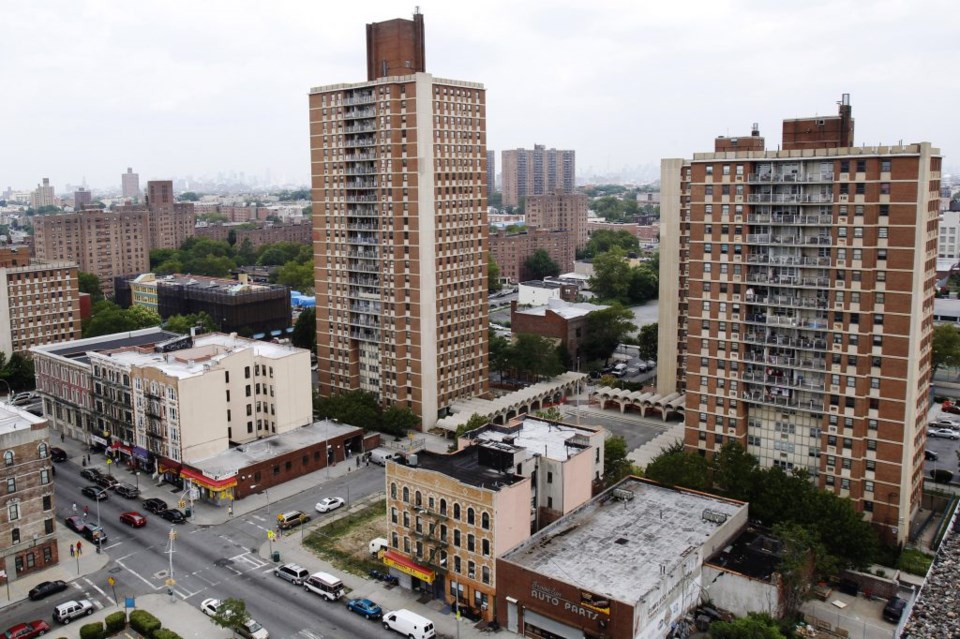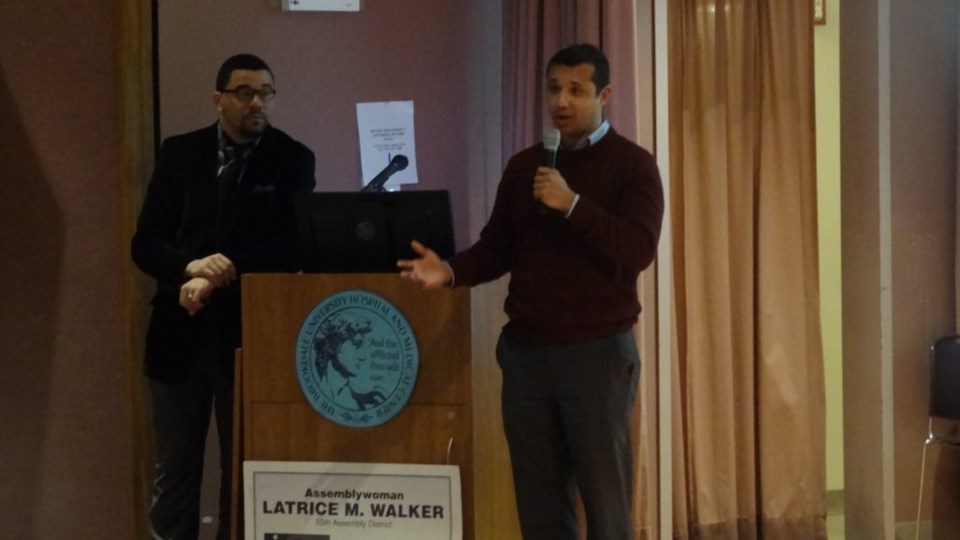
NYCHA residents experience it all the time during the summer months: Elevators in their high-rise buildings stop working, and they are forced to climb what could be 20 or more flights to get to their apartments. When the elevators go out, often times, so do the lights. So it becomes a long and arduous climb in a dark and dangerous stairwell, made worse with groceries and small children in tow.
In neighborhoods such as Brownsville and East New York, the broken elevator issue is a chronic one—something NYCHA has been unable to manage nor control. The reason is because it is not as much a NYCHA problem as it is an energy problem.
The communities of East Brooklyn are running out of power.
"We've also had a major shutdown at Brookdale Hospital where they had to turn down the power; the elevator wasn't working and the chillers were not able to pull. It almost resulted in the hospital having to be evacuated because the hospital did not have air conditioning," said Assemblywoman Latrice Walker at a recent community advisory board meeting.

As a result, to conserve power, Con Edison was forced to turn down the load of the power coming into the grid in Brownsville, explained Walker, who represents the 55th District of Brownsville. And by the year 2017, if the trend continues at the same rate, the community is predicted to experience a "Brown Out."
"Our [dwindling] energy is having very devastating effects on the livelihood of the community," said Walker.
Assemblywoman Walker, who is an environmental lawyer, has spent the last year lobbying in Albany for help addressing her district's growing energy problem.
Fortunately for her, she didn't have to push too hard. The writing was on the wall in East Brooklyn, and had been for quite some time. After Hurricane Sandy, Brooklyn's energy problem became most evident when efforts to restore dwindling energy sources were a huge challenge, finally calling the attention of the governor.

"Right after Superstorm Sandy, Gov. Cuomo began to think about how we can harness power to avoid another power outage, particularly in the most vulnerable communities. There's a lot of conversations going around the 55th District in general," said Morris Cox, a representative from BlocPower, an organization funded by the Obama Administration to bring energy efficiency and clean energy solutions to underserved communities in urban areas. 
So [the governor] put out a feasibility study that would identify community institutions that would agree to use their facilities to install renewable energy sources, such as solar panels, to conserve energy-- places like The Brownsville Multi-Service Family Health Center (BMS), police stations, fire stations, NYCHA cooling centers, schools.
The result of the study is a strategy called "Reforming the Energy Vision" (REV). Cuomo's REV initiative will put in place regulatory changes that promote more efficient use of energy, such as wind and solar energy sources; "distributed" energy resources, such as micro grids and roof-top solar and other on-site power supplies. Also, as the demand for more power increases, REV will promote local markets to achieve greater use of advanced energy management through products that promote power longevity and efficiency.
But the biggest news is, because of Walker's efforts, Con Edison has agreed to spend $250 Million in Brownsville to implement the REV strategy and assist with its energy loads.
The spend will go towards large and small initiatives, including installing a major power grid at Brookdale Hospital to harness and conserve the neighborhood's energy load. Con Edison also will be looking at installing micro-grids (solar panels) throughout across 300 homes within the 55th District, beginning with a Solar Energy Training Institute that will present a makeshift roof to teach local residents how to install and maintain solar panels on their own homes.
Smaller, neighborhood-wide efforts include the installation of wind energy and battery storage facilities, and the replacing of the street lights with LED light bulbs (which save energy costs by up to one-third).
On Saturday, February 27, at Brooklyn Ascend Charter School, located at 2501 Pitkin Avenue, from 6:00pm — 8:00pm, there will be a community engagement meeting with Con Edison.
It's a chance for local residents to ask questions and weigh in on their own energy challenges, said Walker.
"I'm a little girl from Saratoga and Park Place. I grew up in Brownsville. I went to law school and became an environmental lawyer. And so here I am in a position to really affect climate change right here in our little neighborhood," she said.
"The local government is now looking at solutions to this local energy problem. I'm here to encourage the community to do the same thing."



